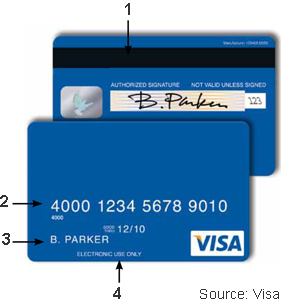Managing Credit Card Processing Risk in an E-Commerce Start-Up

Launching a business can be a messy and intimidating process. Not only do you get to set up your business operations, which in itself is a huge challenge, but you have to deal with a myriad of administrative, legal and accounting issues. You also get to select providers for various services, some of which you probably never knew you needed or just took for granted. Credit card acceptance perhaps most often falls into the latter category. Most new businesses select their payment processor based solely on their pricing proposal and some live to regret their choice.
While it can be really hard to differentiate among all the credit card processing providers out there, you can do a lot to substantially narrow the field. There are also plenty of free resources to help you learn about the risks associated with the acceptance of bank card payments on your website and to develop a strategy to address them. Your goal, when developing such a strategy, should be to ensure that payments are accepted in a way that is fast, secure and reliable.
Your customers’ satisfaction must be a top priority. Satisfied customers don’t dispute transactions, nor do they complain about bad service. And that’s important not just because it promotes your customer-friendly business image, but also because it keeps your merchant account (i.e. credit card processing service) in good standing with your processor. Why? Because dealing with a customer dispute goes beyond the cost and time needed to address it. If it is not adequately addressed, a customer dispute can lead to a chargeback, in which case you will lose the whole transaction amount. And that’s not all. If you cannot keep your chargeback rate in check (it must be below 1 percent of your total transaction count for both Visa and MasterCard), your processor will suspend and eventually close your merchant account.
So, what should you do to mitigate card processing risk and minimize payment acceptance costs? You should begin by taking the following steps:
- Learn about credit card processing risk and train your staff on how to manage it. Your risk exposure in an e-commerce environment is to a large degree determined by your business policies, operational practices, fraud detection and prevention tools, security controls and the types of products and services that you provide. You should have a complete understanding of the risks inherent in online transactions and should be well prepared to address them. We have previously written about e-commerce risk management and encourage you to take full advantage of our expertise. Once you prepare yourself to deal with risk management, you should make certain that your staff gets adequate training on e-commerce risk management as well and are just as prepared to implement your businesses’ policies as you are.
- Do your due diligence when selecting your e-commerce merchant account provider. When examining a payment processing proposal for your e-commerce business, you should go beyond the proposed processing rates and fees. Be advised that your rates and fees are only as good as your ability to process transactions in a way that is compliant with Visa and MasterCard regulations and that provides sufficient protection against fraud and chargebacks. Make sure that your prospective processor can provide effective risk management control and has thorough understanding of fraud risks and liabilities. You need to be sure that your processor will be able to keep your transactions safe and minimize fraud losses. Call a few of the processor’s e-commerce clients and ask what their payment acceptance experience has been, what kind of issues they’ve had, how quickly and expertly they’ve been addressed, etc. We have written in detail about selecting a merchant account provider in a separate article and encourage you to review it as well.
Image credit: Monext.eu.



Thanks for sharing this article. I think yes, customer satisfaction is what we all work for. For that give them multiple payment options. I mean making payment is not an entertaining task so as a seller you have to consider the comfort quotient of your customer. This is must required :)